January 10th, 2007
Ferrari, the Red Dream
By Pietro Carrieri with text by Doug Nye and an
introduction by Fulvio Carmagnola
Review by Alessandro Gerelli
Metal Cover, 150 Euros, hardback, 70 Euros, US version, $39.00
Hardbound, 300 by 320 mm, 232 pages, 150 color photographs
Published by Edition Idea Books Viareggio, Italy
ISBN 88 88033 26 2 or 88 88033 27 0 Metal cover version
Order from Idea Books or
Amazon.com
Oustanding photography, great history
In our digital-Internet world, the value of photography, and by extension the photographers themselves has lessened. (So has writing, but that is another story). Due to the digital camera, not since the introduction of the inexpensive Kodak box camera in the 1930s has there been such an abundance of imagery, while the distribution of images is far greater with the additional advent of the Internet.
Yet only the media and the medium has changed. The same rules of art and light still apply, the same techniques are necessary to produce truly great photographs, and while a great photographer can take a great photograph with a pinhole camera, a less gifted person couldn�t get a good photo with a $5000 Nikon D2Xs. One either has the eye or one doesn�t.
Pietro Carrieri has the eye, the equipment, the desire, the backing and the reputation. His photography looks to be so very simple; put up a black background and throw on the lights. Yes, of course, we all can do that.
Make note of the fact that all of Carrieri's photos are made with traditional
film cameras, not digital.
Ferrari literature collectors surely remember the 16 monographs of the �Cavalleria� series, published in 1993: each volume was a deep analysis of a Ferrari sport or formula car with many pictures, a detailed racing history and careful technical specifications. The photographer for all these books was Pietro Carrieri.
Twelve years later Idea Books has collected many of his best pictures, adding five more car models and an historical analysis by Doug Nye. The book covers 21 of the most relevant Ferrari cars from the 375 F1 of 1951 ending with the F333 of 1993. As most of the cars are the same as in Cavalleria, therefore
coming from all over the world, mostly from the States. The chassis number are often present but not always.
Carrieri has a very developed taste for details, all the backgrounds are strictly black in order to enhance the red of the bodies (only in three cases the cars are in different colors), which become similar to sculptures.
As Fulvio Carmagnola wrote in the introduction, "The patina of age... its art lies in the ability to give materials - such as steel, aluminum, leather, rubber and wood - a feeling of life, which doesn't corrode with the passing of time but is enriched."
Nye�s texts are very synthetic but give a good idea of the reason why the car was built, the development of its body and its racing results.
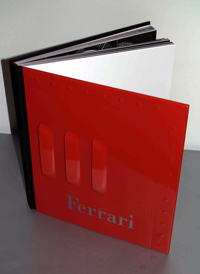
Photo by Alessandro Gerelli.
|
But what has excited my interest and my desire of ownership is the cover of the book in its particular limited series: it is a metallic cover that remembers the air intakes of the Ferraris of year 60s which I admire in a special way. Yes, I would suggest this book to a friend, becauseof the quality of the pictures and of the text: of course my friend shouldn�t be a Ferrari
literature collector because he would most certainly already have the Cavalleria series!
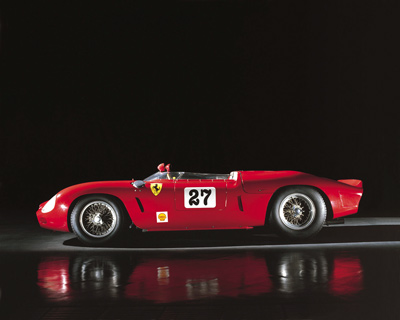
The 196 SP.
|
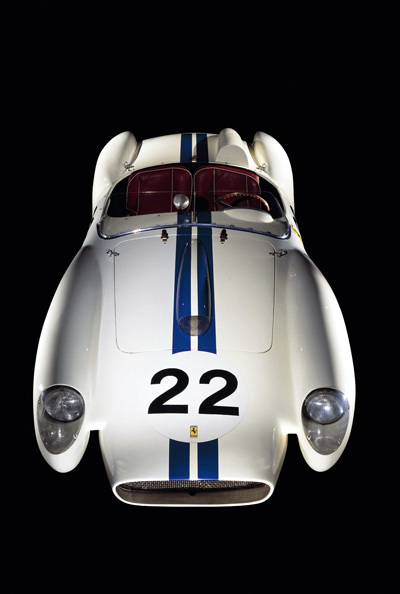
250 Testa Rossa.
|
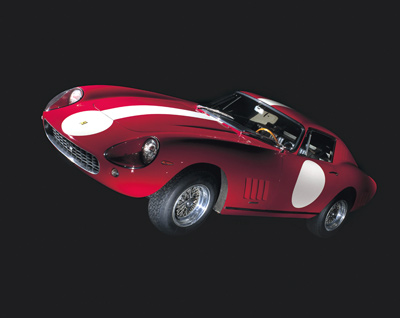
275 GTB.
|
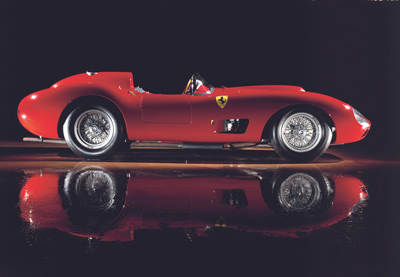
315S.
|
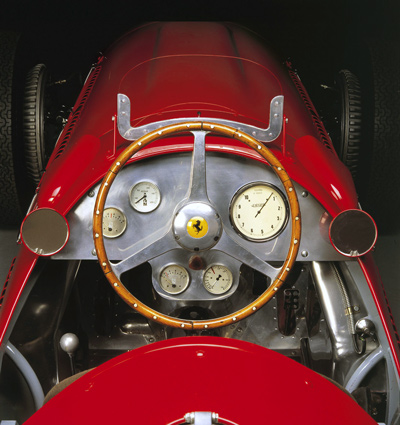
375 F1.
|
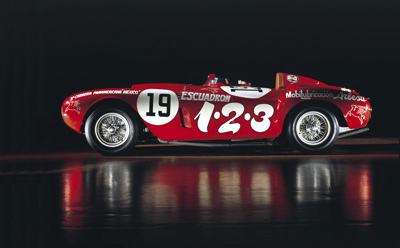
375 Plus.
|



